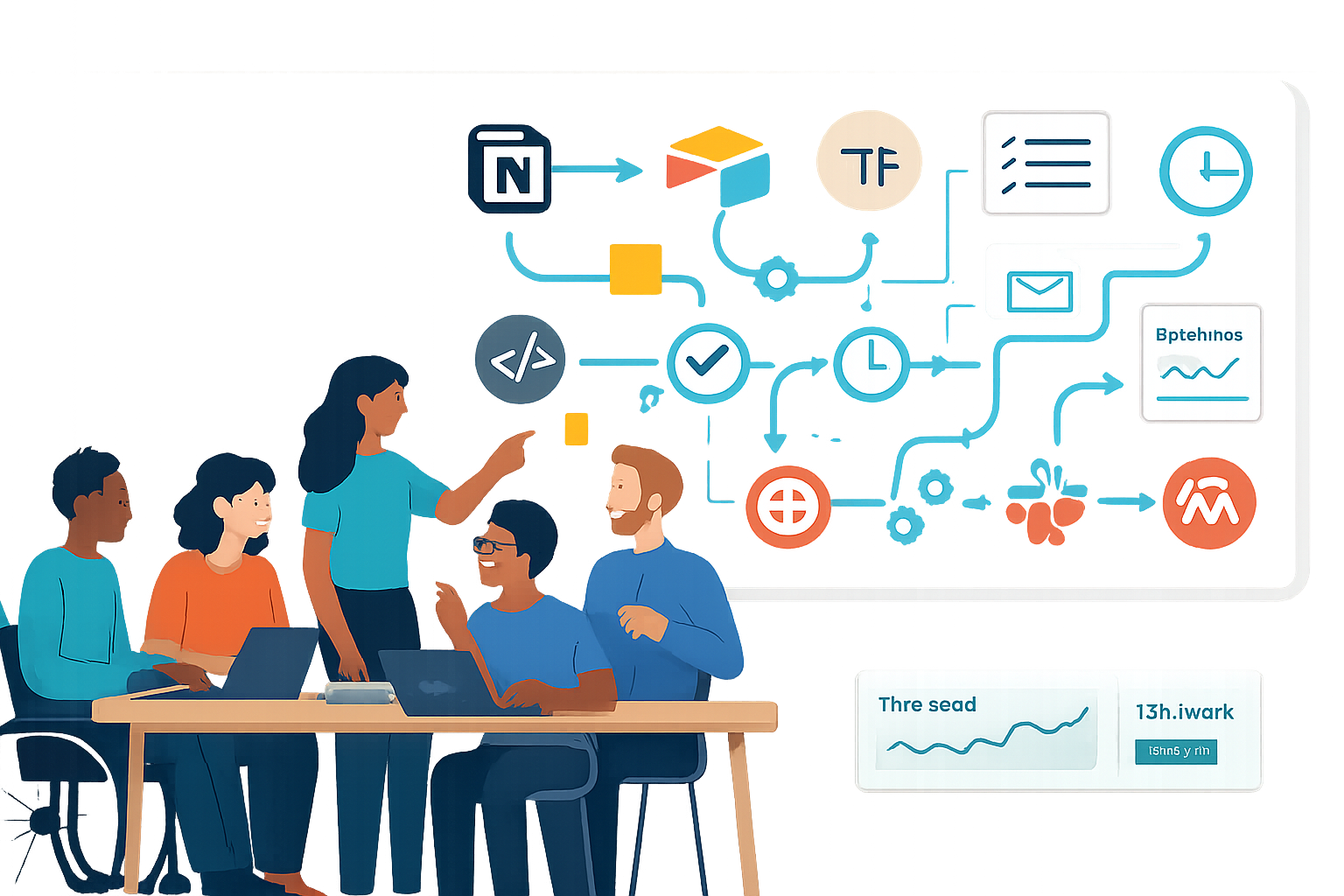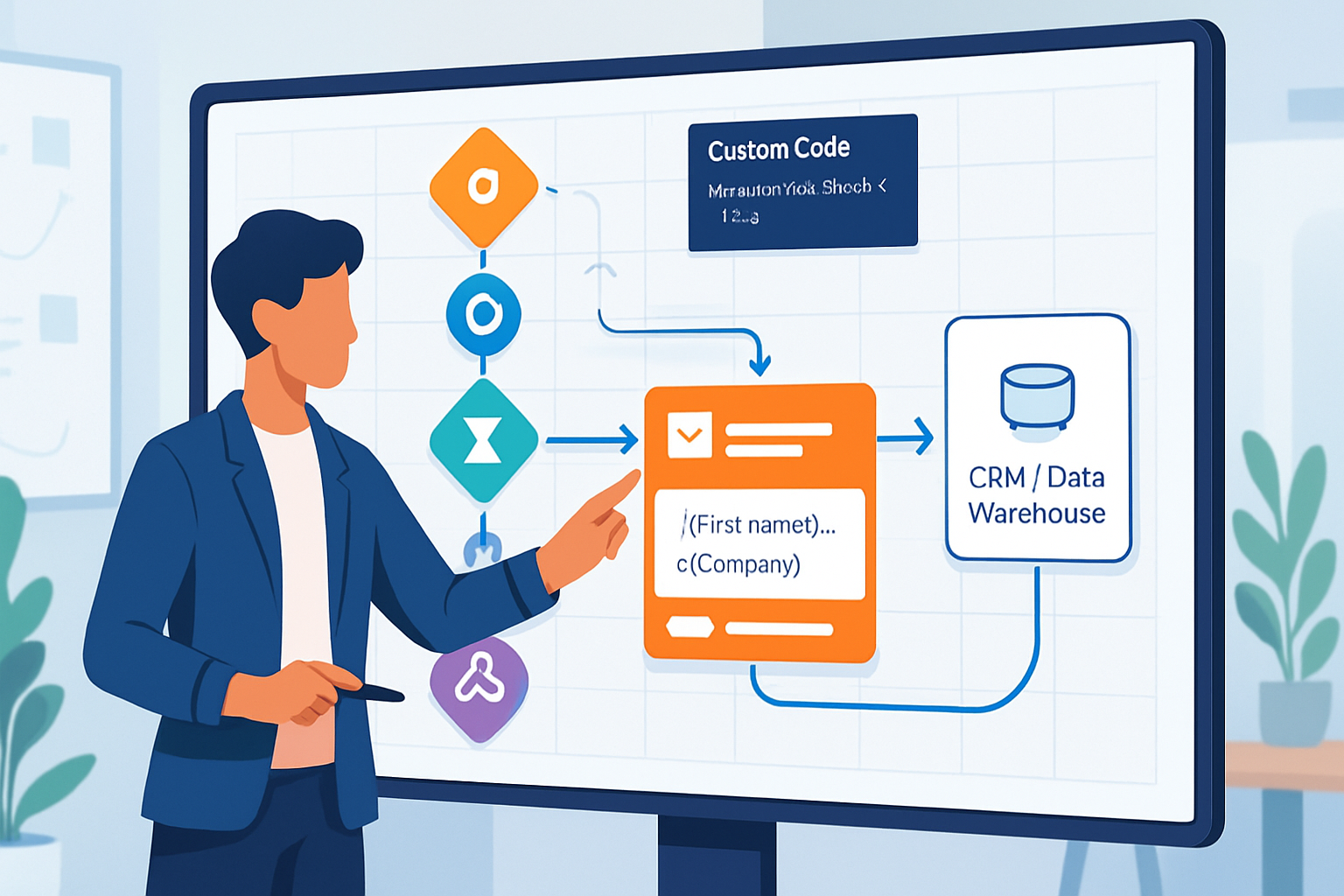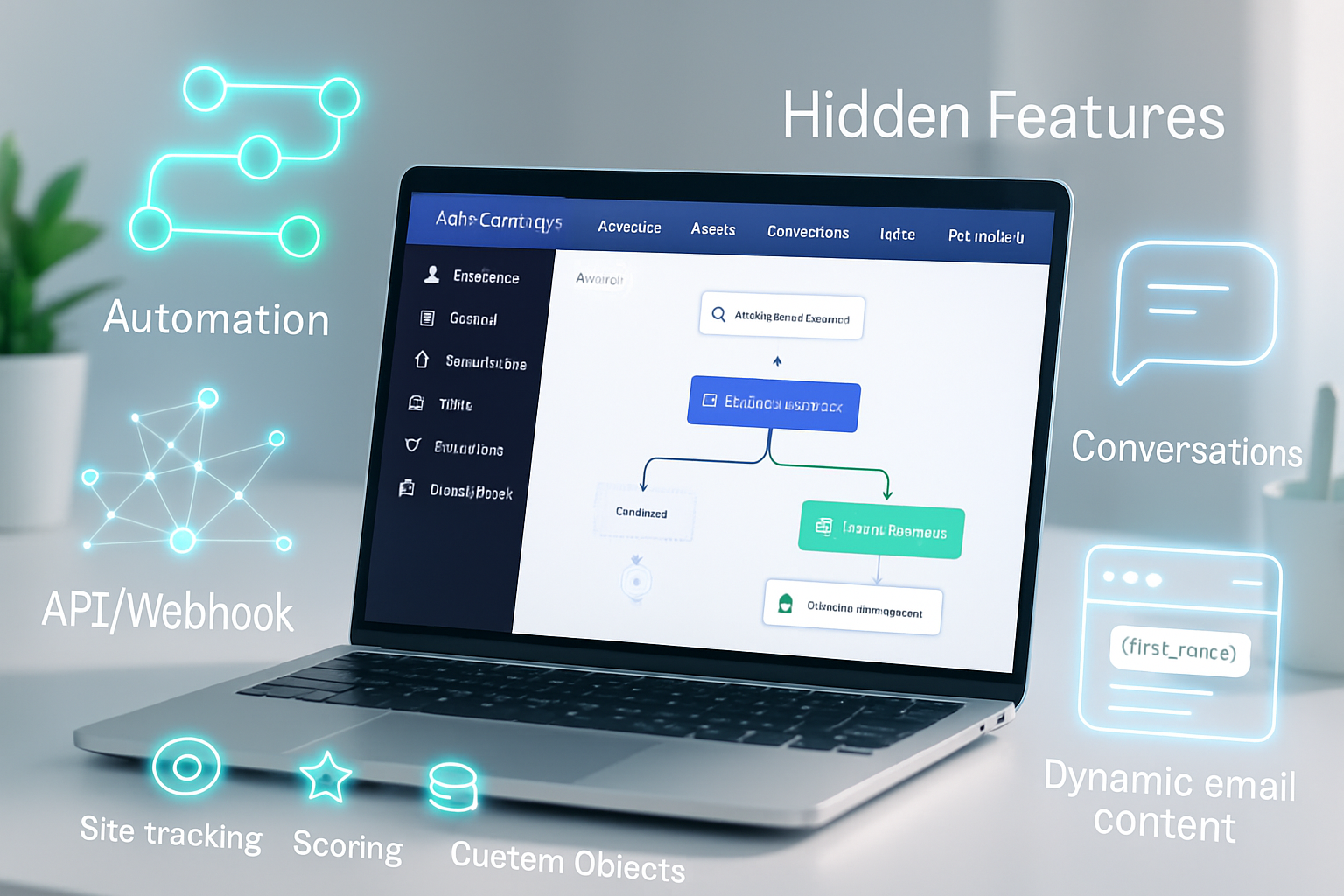· marketing · 8 min read
The Ultimate Guide to Uncommon Zapier Integrations: Boost Your Efficiency Like Never Before
Discover lesser-known Zapier integrations and advanced techniques (Webhooks, Code by Zapier, Digest, Storage) that unlock dramatic productivity gains. Includes practical setups and real-world case studies showing measurable wins.

Why this guide - and why “uncommon” integrations?
Zapier is famous for connecting mainstream apps like Gmail, Slack, and Google Sheets. But the real multiplier effect comes from the less obvious combinations and built-in Zapier tools that automate edge workflows - things your team either does manually or avoids because they’re tedious.
This guide dives into uncommon integrations (and Zapier features) that deliver outsized impact: webhooks, Code by Zapier, storage/digests, telephony triggers, and niche app pairings (Clockify, Miro, Typeform <> Airtable patterns, and more). You’ll get concrete examples, mini-setup walks, and three real-world case studies showing measurable improvements.
References and further reading:
- Zapier apps directory: https://zapier.com/apps
- Zapier help (Webhooks & Code): https://zapier.com/help
- Airtable: https://airtable.com
- Notion: https://notion.so
- Typeform: https://www.typeform.com
- Clockify: https://clockify.me
- Twilio: https://www.twilio.com
- Miro: https://miro.com
The highest-leverage, often-overlooked Zapier building blocks
Before listing uncommon app combos, learn the Zapier features that make them possible:
- Webhooks (Catch/POST) - Receive or send structured payloads to/from any service that supports HTTP. This unlocks custom integrations with apps that don’t have Zapier apps.
- Code by Zapier (JavaScript or Python) - Run small scripts inside a Zap to transform data, call APIs, or compute logic without an external function host.
- Storage by Zapier - Persist small pieces of data between runs (for counters, last-processed IDs, checkpoints).
- Digest - Aggregate multiple events and release them on a schedule - perfect for batched notifications.
- Paths & Filters - Branch or gate workflows to avoid noise and route work by condition.
- Zapier Email Parser - Turn structured emails into trigger data for downstream automation.
Mastering these features lets you treat Zapier like a lightweight integration platform, not just a connector catalog.
Uncommon (but powerful) Zapier integrations and how teams use them
Below are lesser-used integrations or pairings that solve real pain points.
- Webhooks + Notion + Slack - Instant task creation from external systems
- Use case - A partner portal posts a new lead via a webhook; Zapier catches it, creates a Notion task (with custom fields), and posts a formatted Slack alert with action buttons.
- Why uncommon - Teams assume Notion is only manual - but with API-backed Zaps it becomes a real task system.
- Quick tip - Use JSON arrays in the webhook to include subtasks; parse them with Code by Zapier.
- Typeform + Clockify + Airtable - Auto-track billable time from intake forms
- Use case - A client completes a project intake Typeform that includes estimated hours; Zapier creates a Clockify project, logs initial time entries, and inserts a canonical record in Airtable for billing.
- Why uncommon - Combining a form → time-tracking → CRM flow removes manual setup for each client onboarding.
- Quick tip - Use conditional Paths to create different templates for project types.
- Twilio + Google Sheets + Formatter - Proactive SMS customer recovery
- Use case - Detect failed payments in your billing system (via webhook), use Zapier to format a personalized SMS, and send via Twilio; log responses to Google Sheets.
- Why uncommon - Many teams use emails only for recovery; SMS increases open/response rates significantly.
- Quick tip - Keep SMS copy concise and include a short, trackable URL.
- Miro (or Figma) + GitHub + Slack - Creative feedback loop automation
- Use case - When a Miro board or Figma file gets a new comment matching certain keywords, Zapier opens a GitHub issue, links the comment, and notifies the channel.
- Why uncommon - Design tools often sit outside dev workflows. This automates triage and preserves context.
- Quick tip - Use Filters to only create issues for comments labeled “actionable”.
- Loom + Notion + Digest - Scalable knowledge capture
- Use case - Sales or CX reps record Loom demos; Zapier creates Notion pages and batches weekly digests for knowledge sharing.
- Why uncommon - Using video-as-docs at scale is underused; automating indexing and digesting increases discoverability.
- Webhooks + AI (via API) + Storage - Smart triage and routing
- Use case - Inbound support emails hit a webhook; Zapier sends text to an AI classification API (e.g., your hosted model) and stores the classification in Storage; a Path routes the ticket to the right queue.
- Why uncommon - Teams often rely on manual routing; adding a lightweight inference step prevents misrouting.
- Quick tip - Cache model responses in Storage to avoid reprocessing duplicates.
Mini-tutorials: Build three high-impact uncommon Zaps
Tutorial 1 - Catch webhook -> Create Notion task -> Slack alert
- Create a Zap with the “Webhooks by Zapier” trigger (Catch Hook).
- In your external system, POST a JSON payload containing task title, description, assignee, and link.
- Add an action - “Notion - Create Database Item”. Map fields.
- Add an action - “Slack - Send Channel Message”. Use Slack formatting and include a link back to the Notion task.
Example webhook payload (JSON):
{
"title": "Onboard Acme Corp",
"description": "Setup project workspace, billing, and kickoff call",
"assignee_email": "ops@company.com",
"due_date": "2025-10-15",
"subtasks": ["Create project", "Create invoice", "Schedule call"]
}If subtasks are included as an array, add a Code by Zapier step to join them into a single Notion checklist string or create multiple items.
Tutorial 2 - Typeform -> Clockify (create project & initial time) -> Airtable record
- Trigger - Typeform submission.
- Action - Clockify - Create Project (map client name, project type).
- Action - Clockify - Create Time Entry (start timer or log estimated hours).
- Action - Airtable - Create Record (store project ID, timeframe, and invoice flags).
Tip: Use Zapier Paths to differentiate between hourly vs fixed-price projects.
Tutorial 3 - Email Parser -> Webhook (to your app) -> Digest for weekly report
- Create a Zapier Email Parser mailbox and train it to extract fields.
- Zap - Email Parser trigger -> Webhooks by Zapier (POST) to your internal endpoint, and also add a Digest action to collect entries.
- Schedule a weekly Zap to release the digest to a Slack channel or Notion page.
This pattern is excellent for lightweight incident reports or customer feedback.
Advanced patterns: making integrations robust and auditable
- Use Storage by Zapier for idempotency - store the last processed ID to avoid duplicates from unreliable sources.
- Add retries and error-notifications - Send failed Zap runs to a dedicated Slack channel with the payload and error message.
- Monitor latency - Add a timestamp at trigger time and calculate processing lag in Google Sheets or an analytics tool.
- Version control your Code steps - Keep scripts short, and duplicate Zaps before making major edits.
- Centralized logging - Use a Google Sheet or Airtable base as a log sink for triggers, responses, and status.
Measuring ROI: What to track and how to estimate gains
Track these KPIs to measure the impact of uncommon integrations:
- Manual hours saved per week (survey or time-tracking like Clockify).
- Average time-to-assign / time-to-resolution improvements for tasks and tickets.
- Volume of errors or missed items (pre/post automation).
- Response rate improvements (e.g., SMS vs email recovery).
- Sales/Onboarding cycle time reductions.
How to estimate ROI quickly:
- Identify time-per-task (minutes) for a manual process.
- Multiply by frequency (tasks per week) and employees involved.
- Multiply by fully-loaded hourly rate.
- Compare against Zapier subscription cost and any app fees.
Example: If an automation saves one person 30 minutes/day for tasks they previously did, that’s 12.5 hours/month saved. At $40/hr, that’s $500/month - likely exceeding many Zapier plan costs.
Three real-world case studies (anonymized)
Case study A - Boutique digital agency: From manual onboarding to 70% fewer admin hours
Problem: Each new client required manually creating accounts, time-tracking projects, and a kickoff checklist - ~2 hours of admin per onboarding.
Solution: The agency implemented a Typeform -> Zapier flow that created client projects in Clockify, created a Notion onboarding board, and seeded tasks. A Digest compiled weekly onboarding summaries for PMs.
Outcome: On average, onboarding admin time dropped by ~70% per client. Project managers could focus on strategy instead of setup.
Case study B - SaaS support team: Smarter triage with Webhooks + AI classification
Problem: Support emails were routed manually; tickets often landed in the wrong queue.
Solution: Incoming messages were routed through a webhook to Zapier, which called a lightweight classification endpoint (via Code by Zapier). Classification results were stored in Storage and used by Paths to route to the correct support queue. Tickets routed incorrectly were captured and used to retrain the classifier.
Outcome: Triage accuracy improved, SLAs tightened, and time-to-first-response decreased meaningfully.
Case study C - E‑commerce brand: Recovering revenue with SMS automation
Problem: Failed payment emails had low open rates. Manual outreach missed many customers.
Solution: A webhook from their billing system triggered a Zap that formatted a personalized SMS via Twilio and logged the outreach in Google Sheets and their CRM.
Outcome: A measurable uptick in self-serve recoveries and faster payment resolution; manual outreach time dropped significantly.
Note: These are anonymized, composite examples based on common patterns many teams have used successfully with Zapier and similar tools.
Best practices before you build
- Start small - Automate one pain point end-to-end before scaling.
- Document every Zap - purpose, owner, triggers, and fallbacks.
- Add human-in-the-loop for ambiguous decisions - use Slack approvals or email confirmations.
- Secure secrets - store API keys in Zapier securely and rotate them when necessary.
- Test extensively with sandbox data and verify idempotency.
When to graduate beyond Zapier
Zapier excels for rapid automation and lightweight integrations. Consider moving to a more robust integration platform (or custom middleware) when:
- You need high-throughput, low-latency processing.
- You have strict compliance, logging, or auditing requirements.
- Orchestration logic becomes very complex and costly in Zapier.
Often the right path is hybrid: prototype in Zapier, then reimplement core flows when scale or compliance demands it.
Closing: Adopt curiosity-driven automation
The biggest wins come from looking sideways at tools: how can a design comment trigger a bug, how can an intake form create a billing record, or how can a Loom recording drive searchable knowledge? Combining uncommon Zapier integrations with built-in features (webhooks, Code, Storage, Digest) turns busywork into scalable, auditable processes.
Start with one small Zap this week. Automate the task you dread most - you’ll likely find at least 30–60 minutes per week freed up, and more importantly, a replicable pattern you can expand across the org.
Further resources
- Zapier apps and ideas: https://zapier.com/apps
- Zapier help center: https://zapier.com/help



